Serving 596 students in grades Kindergarten-5, Providence Spring Elementary School ranks in the top 5% of all schools in North Carolina for overall test scores (math proficiency is top 1%, and reading proficiency is top 1%).
The percentage of students achieving proficiency in math is 93% (which is higher than the North Carolina state average of 51%). The percentage of students achieving proficiency in reading/language arts is 87% (which is higher than the North Carolina state average of 50%).
The student:teacher ratio of 16:1 is higher than the North Carolina state level of 15:1.
Minority enrollment is 25% of the student body (majority Asian and Hispanic), which is lower than the North Carolina state average of 57% (majority Black).
Quick Stats (2025)
- Grades: Kindergarten-5
- Enrollment: 596 students
- Student:Teacher Ratio: 16:1
- Minority Enrollment: 25%
- Overall Testing Rank: Top 5% in NC
- Math Proficiency: 93% (Top 1%)
- Reading Proficiency: 87% (Top 5%)
- Science Proficiency: ≥95% (Top 1%)
- Source: National Center for Education Statistics (NCES), NC Dept. of Education
Top Rankings
Providence Spring Elementary School ranks among the top 20% of public schools in North Carolina for:
Category
Attribute
Overall Rank
Math Proficiency
Reading/Language Arts Proficiency
Science Proficiency
School Overview
Providence Spring Elementary School's student population of 596 students has declined by 39% over five school years.
The teacher population of 37 teachers has declined by 30% over five school years.
Grades Offered
Grades Kindergarten-5
Total Students
596 students
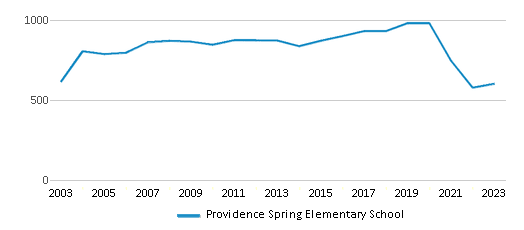
Gender %
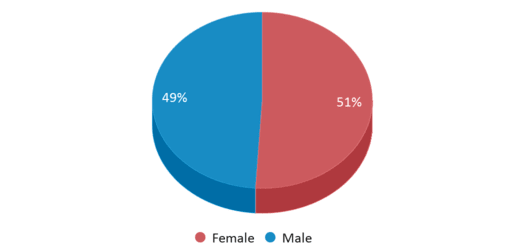
Total Classroom Teachers
37 teachers
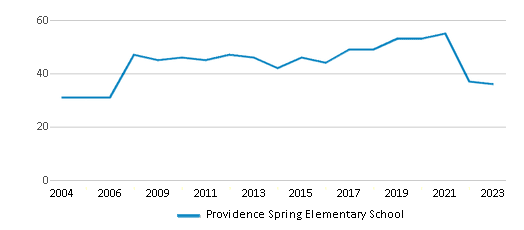
Students by Grade
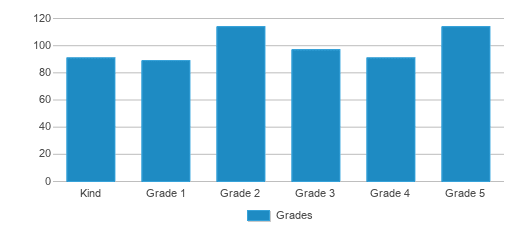
School Rankings
Providence Spring Elementary School ranks within the top 5% of all 2,617 schools in North Carolina (based off of combined math and reading proficiency testing data).
The diversity score of Providence Spring Elementary School is 0.43, which is less than the diversity score at state average of 0.71. The school's diversity has stayed relatively flat over five school years.
Overall Testing Rank
#33 out of 2617 schools
(Top 5%)
(Top 5%)
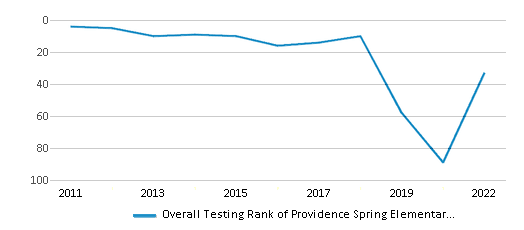
Math Test Scores (% Proficient)
93%
51%
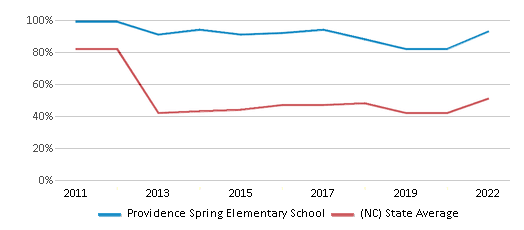
Reading/Language Arts Test Scores (% Proficient)
87%
50%
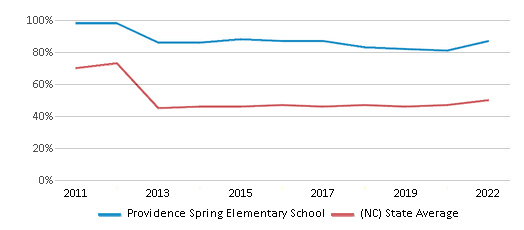
Science Test Scores (% Proficient)
≥95%
63%
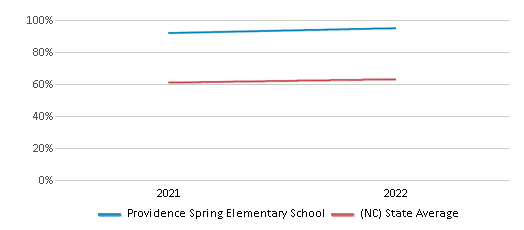
Student : Teacher Ratio
16:1
15:1
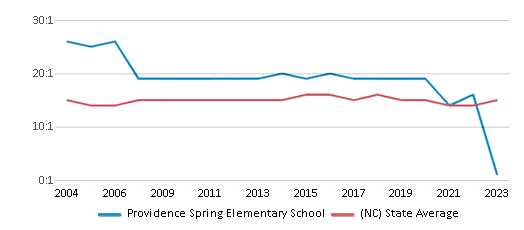
American Indian
n/a
1%
Asian
7%
4%
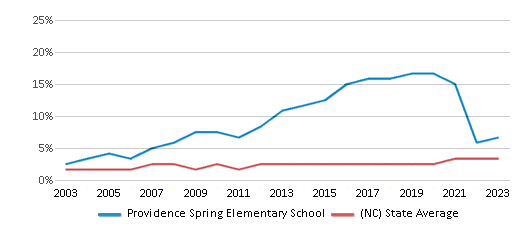
Hispanic
6%
21%

Black
5%
25%
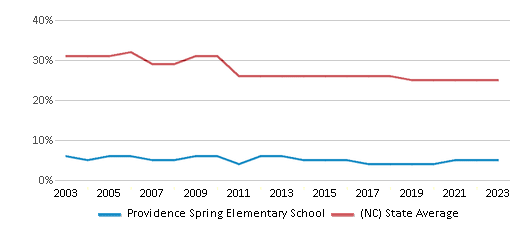
White
75%
43%
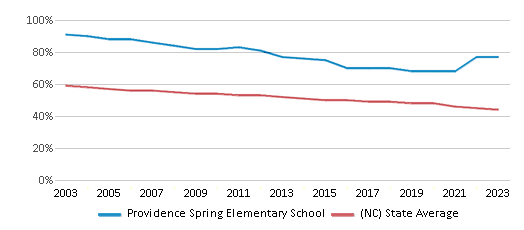
Hawaiian
n/a
n/a
Two or more races
7%
6%
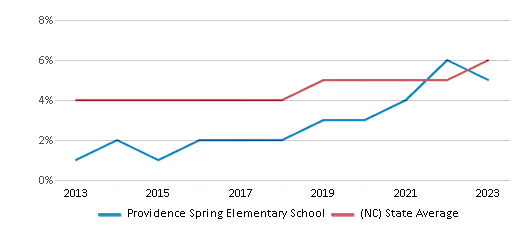
All Ethnic Groups
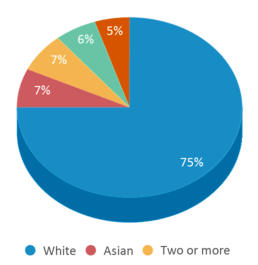
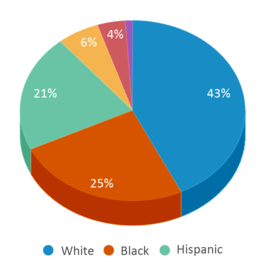
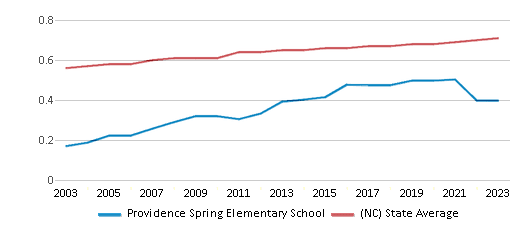
Participates in the National School Lunch Program (NSLP)
Yes
Eligible for Free Lunch
5%
68%

Eligible for Reduced Lunch (19-20)
1%
4%
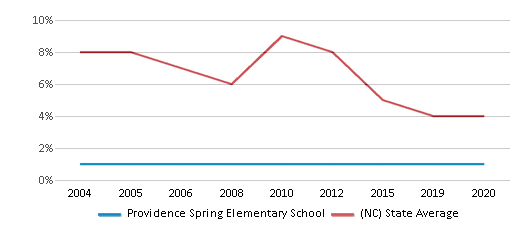
School Statewide Testing
School District Name
Source: National Center for Education Statistics (NCES), NC Dept. of Education
Profile last updated: 02/09/2025
Frequently Asked Questions
What is Providence Spring Elementary School's ranking?
Providence Spring Elementary School is ranked #33 out of 2,617 schools, which ranks it among the top 5% of public schools in North Carolina.
What schools are Providence Spring Elementary School often compared to?
Providence Spring Elementary Schoolis often viewed alongside schools like Polo Ridge Elementary School by visitors of our site.
What percent of students have achieved state testing proficiency in math and reading?
93% of students have achieved math proficiency (compared to the 51% NC state average), while 87% of students have achieved reading proficiency (compared to the 50% NC state average).
How many students attend Providence Spring Elementary School?
596 students attend Providence Spring Elementary School.
What is the racial composition of the student body?
75% of Providence Spring Elementary School students are White, 7% of students are Asian, 7% of students are Two or more races, 6% of students are Hispanic, and 5% of students are Black.
What is the student:teacher ratio of Providence Spring Elementary School?
Providence Spring Elementary School has a student ration of 16:1, which is higher than the North Carolina state average of 15:1.
What grades does Providence Spring Elementary School offer ?
Providence Spring Elementary School offers enrollment in grades Kindergarten-5
What school district is Providence Spring Elementary School part of?
Providence Spring Elementary School is part of Charlotte-Mecklenburg Schools School District.
In what neighborhood is Providence Spring Elementary School located?
Providence Spring Elementary School is located in the Providence Plantation neighborhood of Charlotte, NC.
School Reviews
5 1/31/2022
As a Paideia-accredited school, PSE places emphasis on both academia as well as building good citizens of the world. It's truly one of the best schools across the state with teachers, administrators, parents, and kids who care about doing the right thing.
5 8/18/2020
I started going here in 1st grade and finished 5th back in 2016. I really do think this is a great school. As you can see it ranks in the top 1% in all of NC, and that's crazy. That's really hard to achieve. The teachers I had were really good. They don't push testing success, but the students there still achieve in the top 1%. That's pretty darn good for a public school. I have to say things have changed there. It used to be an almost technology free school not even 10 years ago, but now they use it a lot from what I've heard. But still, every school uses a ton of technology, so it's not a surprise. When I was there, they used chrome books in a good way, for coding and things like that which really made things enjoyable. Great school and if you had the choice between Providence Spring or McKee Elem. or Matthews Elem., choose Providence Spring. I promise, your kid will get one heck of an education at PSE.
Review Providence Spring Elementary School. Reviews should be a few sentences in length. Please include any comments on:
- Quality of academic programs, teachers, and facilities
- Availability of music, art, sports and other extracurricular activities
Recent Articles

What Is A Charter School?
Explore the world of charter schools in this comprehensive guide. Learn about their history, how they operate, and the pros and cons of this educational innovation. Discover key facts about charter schools, including admission policies, demographics, and funding, as well as what to look for when considering a charter school for your child.

10 Reasons Why High School Sports Benefit Students
Discover the 10 compelling reasons why high school sports are beneficial for students. This comprehensive article explores how athletics enhance academic performance, foster personal growth, and develop crucial life skills. From improved fitness and time management to leadership development and community representation, learn why participating in high school sports can be a game-changer for students' overall success and well-being.

February 05, 2025
Understanding the U.S. Department of Education: Structure, Impact, and EvolutionWe explore how the Department of Education shapes American education, from its cabinet-level leadership to its impact on millions of students, written for general audiences seeking clarity on this vital institution.





